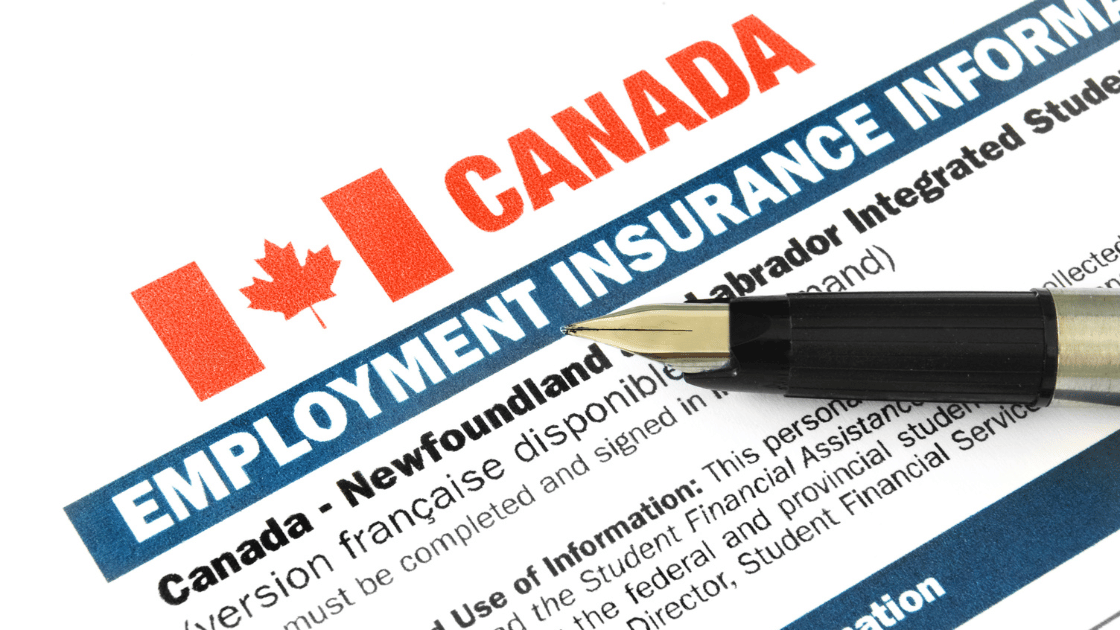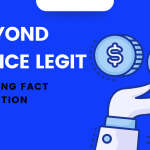Introduction
Employment Insurance: In today’s ever-changing job market, providing a safety net for your team has become paramount. Employment insurance (EI) serves as a crucial tool, ensuring both employers and employees have financial protection in times of uncertainty. This article delves into the essentials of employment insurance, explaining its significance, benefits, and the responsibilities it entails for both parties involved.
Understanding Employment Insurance
Employment insurance, often referred to as EI, is a government program designed to provide financial support to employees during specific life events that may disrupt their income. These events can include job loss, disability, maternity or paternity leave, and more. EI serves as a safety net, helping individuals maintain their financial stability during challenging times.
Different types of EI cater to different circumstances. Unemployment insurance provides benefits to those who lose their jobs due to some factors beyond their control, such as company downsizing or closures. Disability insurance offers financial assistance to employees who are unable to work due to health-related issues. Maternity and paternity leave benefits provide support to parents as they take time off work to care for their newborns.

Employee Rights and Protections
Employees have rights and protections related to employment insurance. These rights ensure that they can access EI benefits when needed. To qualify for EI benefits, employees must meet specific eligibility criteria set by the government. These criteria often include having worked a certain number of hours in the past year and having lost their job through no fault of their own.
Applying for EI benefits involves a straightforward process. Employees need to complete an application and provide necessary documentation to support their claim. This could include proof of employment and the reasons for job loss. The application is then reviewed, and if the criteria are met, the employee becomes eligible for financial assistance.
Employer Responsibilities
Employers also play a pivotal role in the employment insurance process. They are responsible for providing correct and timely information to their employees regarding EI. This includes informing employees about their rights, eligibility criteria, and how to apply for benefits. Employers must as well issue a Record of Employment (ROE) when an employee leaves their job, which is a crucial document for the EI application process.
Inaccurate or delayed ROE submissions can hinder employees from accessing benefits on time. Employers must maintain precise records and ensure that all required documents are submitted promptly. Failure to comply with all these responsibilities can result in legal consequences for the employer.
Navigating Different Types of Employment Insurance
There are several categories of employment insurance, each catering to different circumstances. Unemployment insurance is perhaps the most well-known, providing financial assistance to individuals who find themselves without a job. Disability insurance, on the other hand, offers support to those who are unable to work due to medical conditions. Maternity and paternity leave benefits ensure that new parents can take time off to care for their newborns without financial strain.
Each category has specific eligibility criteria and benefits. Employers should be well-versed in these criteria to provide accurate information to their employees. Effective communication and support during these times can strengthen the employer-employee relationship and help alleviate stress for both parties.
Role of Benefits in Attracting and Retaining Talent
Employment insurance benefits are not just about financial support; they also have a significant impact on attracting and retaining talent. Companies that prioritize robust EI benefits send a strong message to potential employees about their commitment to employee well-being. These benefits contribute to higher employee morale, loyalty, and overall job satisfaction.
Employees who feel secure in their positions and know they have support in challenging times are most likely to stay with their current employers. This reduces turnover rates and saves companies recruitment and training costs. In essence, offering comprehensive employment insurance benefits is an investment in the long-term success of both employees and the organization.
Future Trends in Employment Insurance
As the job market continues to evolve, so does the landscape of employment insurance. Technological advancements and the rise of remote works and others have raised questions about the applicability of traditional Employment Insurance models. The gig economy, with its flexible work arrangements, also presents challenges in terms of EI coverage.
Global events, such as pandemics and economic shifts, can reshape the perception and importance of employment insurance. The COVID-19 pandemic, for instance, highlighted the need for strong social safety nets, prompting discussions about expanding EI benefits to cover a broader range of circumstances.
Conclusion
In an era marked by uncertainty and rapid change, employment insurance stands as a crucial safeguard for both employers and employees. Its benefits extend beyond financial support, impacting morale, loyalty, and overall company success. Employers who prioritize effective communication, accurate record-keeping, and timely submissions of required documents can foster a secure and motivated workforce. By understanding the essentials of employment insurance, employers can navigate the ever-evolving job landscape while ensuring the well-being of their most valuable asset—their team.
FAQ
1. What is employment insurance (EI)? Employment insurance (EI) is a government assistant program that provides financial support to employees during specific life events that may disrupt their income, such as job loss, disability, maternity or paternity leave, and more.
2. Who is eligible for EI benefits? To be eligible for EI benefits, employees typically need to have worked a certain number of hours in the past year and have lost their job through no fault of their own. Each type of EI benefit may have slightly different eligibility criteria.
3. What is the role of employers in the EI process? Employers play a crucial role in the employment insurance process. They are responsible for providing accurate information about EI to their employees, issuing Records of Employment (ROEs) when employees leave their jobs, and maintaining precise records to ensure timely submissions.
4. How can EI benefits impact employee retention? EI benefits contribute to higher employee morale, loyalty, and job satisfaction. Employees who feel secure in their positions are most likely to stay with their employers, reducing turnover rates and associated costs.
5. How does the gig economy affect EI coverage? The gig economy’s flexible work arrangements have raised questions about the applicability of traditional EI models. As this sector grows, discussions about adapting EI coverage to accommodate gig workers have emerged.
6. How have global events influenced the perception of EI? Events like the COVID-19 pandemic have emphasized the importance of strong social safety nets, sparking conversations about expanding EI benefits to cover a broader range of circumstances and providing better protection during unexpected crises.
7. Can self-employed individuals access EI benefits? Self-employed individuals may have limited access to traditional EI benefits. However, some regions offer alternative programs, like maternity and parental benefits, for self-employed individuals. It’s essential to research and understand the options available in your specific area.
8. What is the application process for EI benefits? The application process for EI benefits involves completing an application form and providing necessary documentation, such as proof of employment and reasons for job loss. The application is then reviewed, and if the eligibility criteria are met, the employee becomes eligible for financial assistance.
9. Can EI benefits be used for disabilities not related to work? EI benefits for disabilities are generally related to health issues that prevent an individual from working. Non-work-related disabilities may be covered under other disability insurance policies, so it’s crucial to understand the specifics of the insurance coverage you have.
10. How can employers communicate EI information effectively to their employees? Employers can communicate EI information through various channels, such as employee handbooks, intranet portals, and informational meetings. Providing clear and concise information about eligibility criteria, application processes, and the importance of accurate record-keeping can help employees navigate the EI process more effectively.
11. Are EI benefits taxable? Yes, EI benefits are considered taxable income. When receiving EI benefits, employees can choose to have taxes withheld at source to avoid a large tax bill when they file their tax returns.
12. How have technological advancements affected EI processes? Technological advancements have streamlined the EI application process in many regions. Online applications and electronic submissions of documents have made it more convenient for employees to access and apply for benefits.
13. Can employers appeal EI decisions on behalf of their employees? Yes, employers can assist employees in appealing EI decisions. If an employee’s EI application is denied, they have the right to appeal the decision, and employers can provide relevant information and support during the appeals process.
14. Is there a maximum duration for receiving EI benefits? Yes, there is generally a maximum duration for receiving EI benefits. The length of time that an individual can receive this benefits depends on factors such as the region, the type of benefit, and the individual’s employment history.
15. How can employers stay updated on changes in EI regulations? Employers can stay updated on changes in EI regulations by regularly checking government websites related to employment and labor. Subscribing to newsletters and attending seminars or workshops on labor law can also provide valuable insights into regulatory changes.
16. What is the relationship between EI and other forms of social assistance? EI and other forms of social assistance, such as welfare programs, serve different purposes. EI is specifically designed to provide financial support to individuals who have lost their jobs or are unable to work due to certain life events. Welfare programs, on the other hand, offer assistance to individuals with low household income and limited resources.
17. Are there limitations to the amount of EI benefits an employee can receive? Yes, there are limitations to the amount of EI benefits an employee can receive. Benefit amounts are typically calculated based on a percentage of the employee’s insurable earnings, subject to a maximum weekly amount.
18. Can employees receive multiple types of EI benefits simultaneously? In some cases, employees may be eligible for multiple types of EI benefits simultaneously, such as receiving disability benefits while on maternity or parental leave. However, each type of benefit has its own eligibility criteria and requirements.
19. How does EI support employees during maternity and paternity leave? Maternity and paternity leave benefits provide financial support to parents as they take time off work to care for their newborns. This support helps alleviate the financial burden of taking time off during a critical period in the family’s life.
20. Are EI benefits available to temporary and part-time employees? Yes, temporary and part-time employees may be eligible for EI benefits if they meet the eligibility criteria, including having worked a minimum number of hours within a specific period. The specific requirements may vary by region.
Employment insurance is a vital aspect of modern workforce management, ensuring the financial security of employees and promoting loyalty within organizations. Understanding the essentials of employment insurance, both from the perspective of employers and employees, is essential for fostering a supportive and secure work environment in the face of uncertainties and challenges.
Thanks for reading.
Also read: Cool and Healthy Summer Recipes for Kids
Allstate Insurance Near Me: Finding Your Perfect Coverage 2023
Professional Liability Insurance: A Lifesaver for Service-Based Professions | 2023
Commercial Insurance: Hauling Your Business Toward Success | 2023










